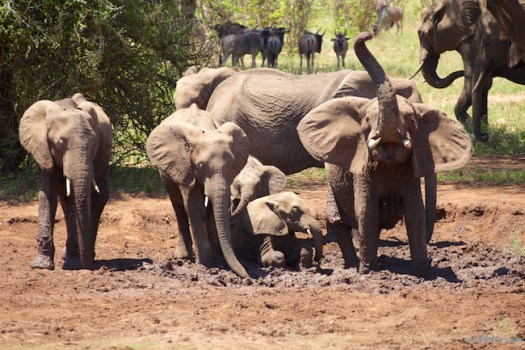For those with disabilities, the world is slowly but surely becoming more accommodating- in public spaces, in work places, and finally in vacation destinations. Cruises and mega resorts are popular vacations for disabled individuals. But what if you want a little adventure? More and more boutique resort operators are creating an extra luxury tent or two that accommodate. Here are a few glamping options for those who have special needs.

Glenmont, Ohio, a charming hamlet of 272 people halfway between Columbus and Cleveland is home to The Mohicans, a small resort famous for treehouses designed by owner Kevin Mooney and architect/craftsman Pete Nelson, featured on The Discovery Channel show, “Treehouse Masters.” How do you get a wheelchair into a tree, you might ask? “Take the gravel path, directly to bridge that takes you to a platform, cross the bridge to a double front door that has plenty of room that a wheelchair can go in,” says Kevin. He’s describing the White Oak Treehouse, with an accommodating large deck and a bathroom with grab bars. It goes for $195/night to start, with two bedrooms and a “fully stocked kitchen.”

If you’d rather stay ground based, and you have a large party, the Amish-built Walhonding cabin may be more to your liking, a wheelchair accessible dwelling with “rustic upscale decor, cathedral split log ceilings, covered front porch, back patio, leather furniture, radiant heat floors,” and sleeps up to 14 guests.

Longing for Hawaii? Along the west shore of stunning Turtle Bay at the Turtle Bay Beach Resort in Oahu are clusters of beach cottages, one of which is an “ADA (Americans with Disabilities Act) Accessible Oceanside King Cottage. With its ADA automatic door, multiple access ramps, and spacious ADA accessible bathroom with all the right provisions, you will spend less time worrying about mobility and more time enjoying warm ocean breezes while your exclusive cottage concierge tends to your every need. Average daily rate is $394.

For a cheaper view of the sea, consider the Concordia Eco Resort on St. John, U.S. Virgin Islands. Travel blogger Tiffiny Carlson of The Mobility Resource raves about Concordia’s accommodating accommodations stating, “If you’re looking for a low cost way to enjoy the jungle and ocean without any hindrances, this is it.” Starting at $195/night, choose one of the four “eco-tents” with accessible features nestled on an ocean-facing hillside, or splurge for the Premium Eco-Tent (which has some minor restrictions, so please call ahead with questions). Two of eight eco-studios planned for the near future are slated to be handicap accessible as well.

Glampers with disabilities who want a taste of the Old West will want to check out the luxury glamping tents at Moose Creek Ranch in Victor, Idaho. A mere 30 minute drive from Jackson Hole, Wyoming, guests can “enjoy a day there, come home to the ranch, rest, then set off the next morning towards West Yellowstone and the west entrance to Yellowstone Park.” In addition to having handicap accessible luxury tents (which may have limitations, so call ahead), Moose Creek Ranch is pet and kid friendly as well.

Venture off to Namibia, Africa for a once-in-a-lifetime experience African safari and stay at the Etosha Village, which provides “wheelchair friendly units designed with a ramp instead of stairs, a more spacious bathroom for easy wheelchair access and the room has a different interior arrangement for easier access.” The operators of Etosha Village pride themselves on their commitment to the conservation of wilderness areas, constructing their luxury canvas suites to ensure minimum impact on the natural habitat.

For quite some time, travelers with mobility issues found it difficult to imagine such outdoor adventures as a stay in a treehouse or on an African savanna. Now many of those amazing outdoor experiences, thanks to thoughtful resort operators, are finally within reach.



















